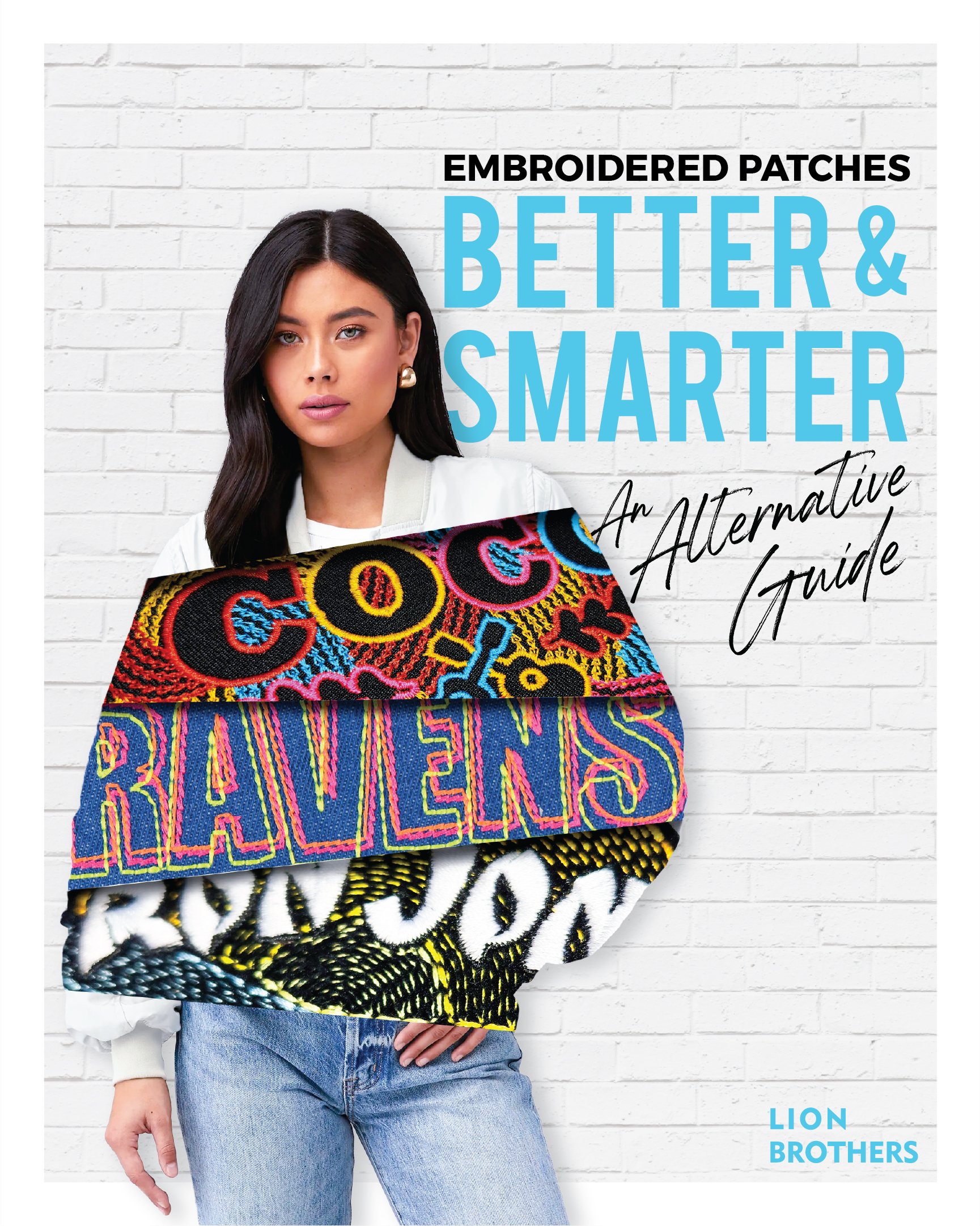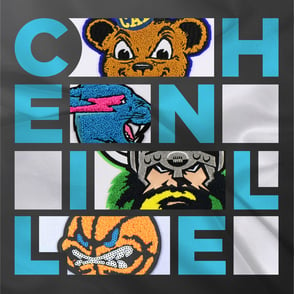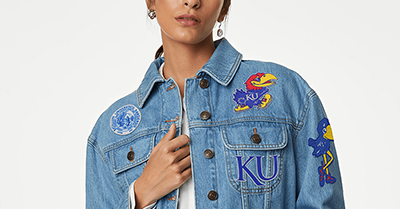HOW TO DESIGN EMBROIDERED PATCHES BETTER AND SMARTER


There are a ton of exciting materials and techniques to use when designing your patches, but there is still one undisputed king at the top of the mountain, and that king is embroidery. I love a good techy silicone emblem, or a classic chenille vibe, or a three layer custom combination, but when people think of the word “patches” they think embroidered thread on twill. It’s iconic, fits any brand, but most importantly embroidery is timeless and will be in fashion forever. What people don’t realize is that you can do so much more with embroidered patches than just your standard fully stitched dense embroidery with the same old threads. In this post, I’m going to show how to make your embroidered patches lighter, more flexible, more dynamic, and in most cases more cost effective.
Before we get started, your next dozen designs are waiting for you in our free stitch library with patterns, ideas, and more techniques not found in this post.
Open stitching
If you are a designer or digitizer, you’re probably used to seeing art on a computer get translated into thread, with the goal of getting it to look as close as possible to the original design. Nothing wrong with that and it’s normally the name of the game, but fully stitching out every design top to bottom can be expensive. Every time the needle on an embroidery machine punches into your base material your cost goes up. More needle perforations, means more thread, means more cost. Not to mention a thicker final product as thread starts to pile on top of itself. So, what can we do about this? The answer is, do less. Use “open stitching” techniques to air out your designs. Think of it as sketching and as opposed to painting. Light running stitching, thin satin stitching, and utilizing the negative space of a design to pull the ground material forward can create a much thinner and more cost effective patch. Just because you’re not using as much thread coverage doesn’t mean you have to sacrifice aesthetics, on the contrary. Now you have space to use decorative stitching to really lean in and own this more artistic look.

Decorative stitching patterns
If open stitching is the idea, then decorative stitching would be the look. Think of decorative stitching as patterns that you can use to lightly cover the spaces within your design instead of completely filling in that space with solid thread. This can be a fantastic way for fashion brands or sports franchises that focus on selling apparel branded with their primary logos. Solid stitching a wordmark on a left chest can get real repetitive, real quick. A lack of variety in the decorations you’re offering could fail to engage your customer base and lose you sales in the process. It’s an easy upgrade to incorporate, you can choose from existing patterns, create your own, or let us know and we can make something just for you.

Tonal embroidery
This is one of my personal favorites, and is all about less is more. Embroidery is actually a three dimensional medium, however subtle, with peaks of satin stitching and valleys of flat fill stitching. With this in mind, instead of assigning a matching thread to every color in the original artwork, pick a single dominant color in a satin thread, something with a shine to it. Then when the light plays overtop of the stitchings geography, the contrast in the highlights of the tonal thread really shines and adds an air of modern sophistication to your design. Another added upside is that by reducing thread colors, that’s less threads for an operator to load into an embroidery machine therefore reducing your production time and overall cost.

Satin vs matte thread
Now that we understand how light impacts the look of embroidery, what happens if we intentionally reduce that effect. The satin finish of most standard embroidery thread has a slight shine to it, but by using a matte thread instead we can create a look that is flatter and softer. This is an ideal choice for a vintage aesthetic since it replicates the look of cotton thread which predates today’s ubiquitous synthetic offerings. When applied correctly this can be another easy change that has a big visual impact on your next design.

Satin embroidery thread (left), matte embroidery thread (right).
Specialty threads
Even though some specialty threads may be slightly more expensive, a couple extra cents invested into a decoration that elevates an entire garment could help a consumer justify a larger price point and be the difference between selling out and being stuck with racks of stale looking overstock. Metallic, iridescent, neon, and matte threads can either transform or add a complimenting accent to any design. Variegated or space dyed thread has been dyed different colors in segments throughout the spool and is also an excellent choice. Pay for five thread colors but look like you paid for twenty.

Variegated or space dye thread.
Embroidery’s ability to do all of this is what made it king of the mountain to begin with. It really is only limited by what you can think up. This article is a great place to get started but if you are light on experience or if all of this sounds like a lot, that’s because it is, but don’t worry. We have talented people who know this stuff inside and out and who are ready to bring all these techniques to the table for your next project. Contact us now and let’s get started!

Feb 22, 2024 12:07:06 PM



